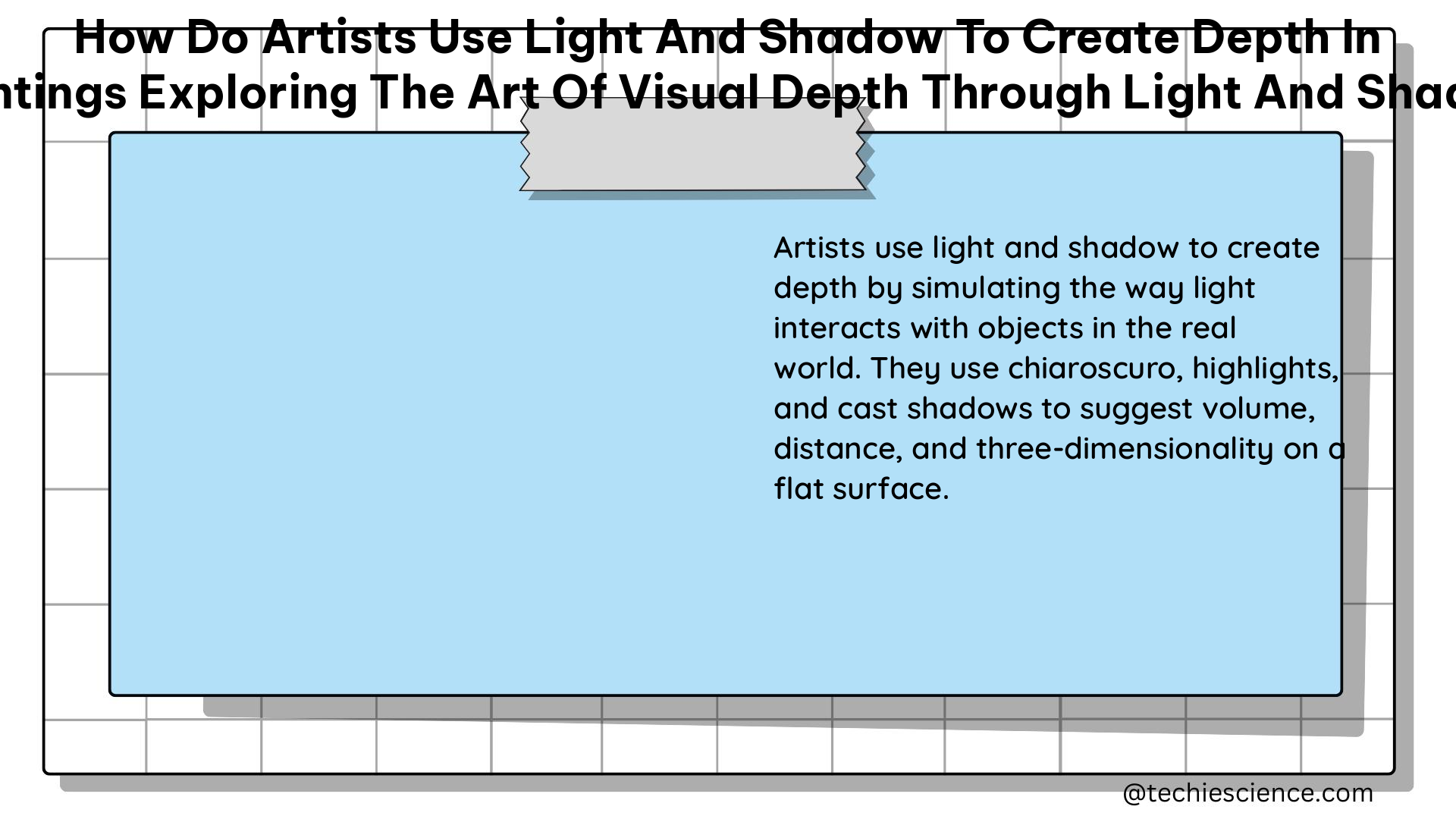Artists have long harnessed the power of light and shadow to create captivating depth and dimensionality in their paintings. This intricate interplay of illumination and darkness is a fundamental technique in the realm of visual arts, allowing artists to transform a two-dimensional canvas into a three-dimensional world.
Understanding the Principles of Light and Shadow
At the core of this artistic mastery lies a deep comprehension of the physical properties of light and its interaction with various surfaces. Artists must possess a keen understanding of the following principles:
-
Light Source and Positioning: The location, intensity, and direction of the light source(s) play a crucial role in determining the placement and intensity of shadows. Artists carefully consider the position of the light source(s) to create the desired depth and mood within the painting.
-
Value and Contrast: The lightness or darkness of a color, known as its “value,” is a crucial element in creating depth. Shadows are typically darker in value than the surrounding areas, while highlights are lighter. The range of values, often expressed on a 1-10 scale, allows artists to establish a sense of depth and volume.
-
Chiaroscuro: This painting technique, derived from the Italian words for “light” (chiaro) and “dark” (scuro), utilizes high-contrast between light and shadow to define forms and create a sense of depth. Mastering chiaroscuro requires a deep understanding of perspective, the physical effects of light, and the properties of the paints used.
Techniques for Depth Perception

Artists employ various techniques to harness the power of light and shadow and create the illusion of depth on a two-dimensional surface. Some of the key techniques include:
-
Atmospheric Perspective: This technique simulates the natural effect of the atmosphere on the appearance of distant objects. Distant objects appear hazy, less distinct, and lower in contrast, while closer objects are more vibrant and detailed.
-
Linear Perspective: By applying the principles of linear perspective, artists can create the illusion of depth by depicting objects as they appear to diminish in size and converge at a vanishing point on the horizon.
-
Overlapping: Placing objects in front of one another, creating a sense of depth and spatial relationships, is a fundamental technique for creating depth.
-
Relative Size: Depicting objects of known size in relation to one another can convey a sense of depth. Smaller objects are perceived as being farther away, while larger objects are seen as closer.
-
Shading and Highlights: The careful placement of shadows and highlights on an object can create the illusion of three-dimensionality, emphasizing its form and volume.
Case Study: Vermeer’s Masterful Use of Light and Shadow
The Dutch painter Johannes Vermeer is renowned for his masterful use of light and shadow in his paintings. Vermeer’s approach to depicting light and shadow was highly considered and geometrically precise.
In his paintings, Vermeer depicted shade, but not shadow, with great precision. This choice, while creating a serene and timeless quality in his scenes of everyday life, also resulted in a lack of unity in the depicted space. The absence of precise shadow rendering left the viewer with the impression that the story being told was more fictional than realistic.
However, if we consider that Vermeer’s intent was not merely to capture a scene of daily life, but to convey a deeper narrative or lesson, the lack of precise shadow depiction may have been a deliberate choice. By leaving the viewer with a sense of the fictional, Vermeer could invite them to engage more deeply with the underlying message or meaning of the work.
Mastering the Art of Visual Depth
Achieving depth and dimensionality in paintings is a complex and multifaceted endeavor, requiring a deep understanding of the physical properties of light and shadow, as well as a keen artistic sensibility. By carefully manipulating the intensity, placement, and contrast of light and shadow, artists can create a sense of three-dimensionality on a two-dimensional canvas, transporting the viewer into a captivating and immersive visual experience.
Whether through the use of chiaroscuro, atmospheric perspective, or the precise rendering of shade and shadow, the mastery of light and shadow is a hallmark of the greatest painters throughout history. By studying and emulating these techniques, aspiring artists can unlock the secrets of visual depth and create works that captivate and inspire.
References:
- Light and Shadow in Painting – Concerning the Expression of Shadows in Western Painting – Kazuko Mende
- Chiaroscuro: The Art of Light and Shadow – Aela School
- A Beginners Guide to Light & Shadow – Part 1 Using Shadows and Highlights to Create Depth in Painting

The lambdageeks.com Core SME Team is a group of experienced subject matter experts from diverse scientific and technical fields including Physics, Chemistry, Technology,Electronics & Electrical Engineering, Automotive, Mechanical Engineering. Our team collaborates to create high-quality, well-researched articles on a wide range of science and technology topics for the lambdageeks.com website.
All Our Senior SME are having more than 7 Years of experience in the respective fields . They are either Working Industry Professionals or assocaited With different Universities. Refer Our Authors Page to get to know About our Core SMEs.